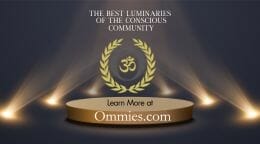Honoring the Darkness on the Healer’s Journey

The Darkness on the Healer’s Journey
In the “Hero’s Journey,” Joseph Campbell provides a roadmap of the stages we go through to carry accomplish missions not just for ourselves but for the greater good: Separation, Initiation, and Return, all necessary stops on the healing path. Each includes sub-stages none of which would be possible without first accepting “the call” –a sacrificial dare from the Universe. The hero undertakes this challenging journey with the assurance that God’s, then emerges enlightened. Two critical stages are Crossing the Threshold and Entering the Belly of the Beast.
All mythological and religious tales follow the pattern but take on the local characteristics of the culture that created them: Jesus in the wilderness, Buddha venturing into seclusion and solitude, Moses in the dark desert confronting the “burning bush,” Mohammad seeking personal refuge in a cave. The common thread is darkness and isolation, which we in contemporary life seem to fear. Bhante Shravasti Dhammika (The Buddhism Guide A to Z) explains the delicate balance we must strike to use refuge wisely: “A person can choose to be solitary or be forced into it by others or by circumstances. When solitude is unwanted it can result in loneliness, anxiety or fear. When used at the right time and in the right manner it can have an important role in spiritual development.”
Darkness – We Must First Heal Ourselves
If we intend to heal others, we must first heal ourselves. A good starting point is our willingness accept separation and embrace the darkness. In stillness, there is wisdom. In darkness, there is stillness. There is peace in stillness. In peace, there is capacity to heal others. The Dalai Lama teaches, “We can never obtain peace in the outer world until we make peace with ourselves.”
If we did not have darkness, how would we recognize the light? Anne Frank wrote, “Look at how a single candle can both defy and define the darkness.”
The duality exists in the Taoist yin/yang symbol, darkness/brightness, which illustrate the interdependence of opposing forces. Our very breath exercises this: on the yin (inhale) we receive; on the yang (exhale) we release. What expands must contract. These forces become work together, allowing life.
The yin is the receptive darkness; the yang the active light. It is the receiver and the giver, the listener and the activist. That darkness represents the seeking, the questioning, intuition, feminine energy. The darkness invites us into the void, where all consciousness begins.
Journey into Darkness Comforts, Eases Transition
Our journey into darkness, deep meditation, represents the mythological cave, the womb, the place of divine stillness from which we came. Campbell speaks of the stunning cave paintings of our early ancestors who recorded events sacred to the people, precursors of stained glass church windows. LeBoyer birthing methods emulate the soft stillness of the womb by using water (fluidity, receptivity) and darkness to gently usher the new human over the threshold into to the world. The darkness is comforting, easing the transition into earthly existence. And so, it is when we leave this world.
Darkness has negative implications that present fear but in religious literature, those situations become initiations. The story of Jonah in the belly of the whale remains a significant lesson in three great Western religions: Judaism, Christianity, and Islam, underlining the necessity of the dark isolation we encounter just before we confront the Divine and bring forth wisdom, healing, and blessings.
Plants Experience Light and Dark Responses
Even plants experience the tense relationship between light and dark.
In an elementary school explanation of why plants lean toward the light we can see that both forces work together. Aurins in plant cells lead plants away from light, which accelerates the growth of cells on the darker side. As a result, the plant naturally tilts toward the side of light. “The concentration of aurins on the dark side may be due to the fact that sunlight slows or kills these aurins when light falls on them. However, as long as one part of the plant gets sunlight, it can make food and the whole plant survives” (www.pitara.com).
The same can be said for us. When we sit in the darkness of our deep meditation, we invite our shadow side to emerge. This can be a very frightening experience for those who have not explored the interior regions of our thought and emotions. But as these thoughts and feelings emerge (or “come to light), we expand our consciousness and raise our vibration. Thus, what feels like a nightmare or threat actually elevates us, drawing in more light. Shamanic traditions honor the Shadow as a partner in healing.
The Shortest Day of the Year
Consider December 21st, the shortest day of the year, called Yule by pagans. It is, of course, the longest night of the year, the only point on the calendar when we experience more darkness than light. The pagans, seeing this as a sacred time, created Yule rituals and ceremonies to welcome the return of the sun to earth. It is the natural cycle of the universe.
We can use rituals to welcome the darkness as many metaphysicians have done throughout the ages: new moon ceremonies to honor and use the power of darkness to usher in the growing light, simple candle lighting, meditation to reach the darkness and call in the light. We don’t even have to summon the light. It finds us, naturally.
Rev. Lisa Shaw, OMTimes Magazine Spirituality Editor, is an animal communicator, intuitive reader, clairvoyant, and Reiki Master working in metaphysics since 1986. She has an M.F.A. in writing and recently completed an M.A. in Pastoral Ministry with a specialization in loss and healing. Lisa is an award-winning English professor and has served as a hospice chaplain. This gives her sacred glimpses into the space between life and death. She devotes her Reiki practice to animals, and specializes in end-of-life issues people face with their pets.



